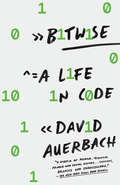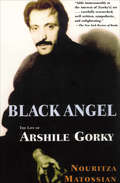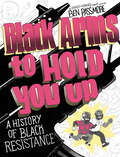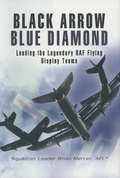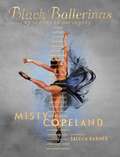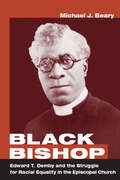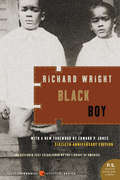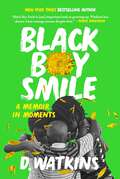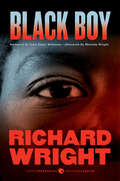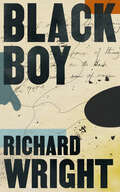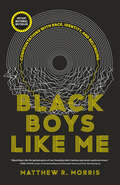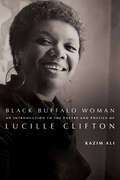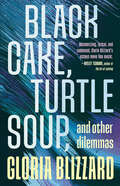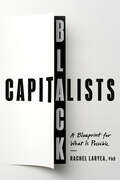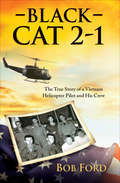- Table View
- List View
Bitwise: A Life in Code
by David AuerbachAn exhilarating, elegant memoir and a significant polemic on how computers and algorithms shape our understanding of the world and of who we are Bitwise is a wondrous ode to the computer languages and codes that captured technologist David Auerbach’s imagination. With a philosopher’s sense of inquiry, Auerbach recounts his childhood spent drawing ferns with the programming language Logo on the Apple IIe, his adventures in early text-based video games, his education as an engineer, and his contributions to instant messaging technology developed for Microsoft and the servers powering Google’s data stores. A lifelong student of the systems that shape our lives—from the psychiatric taxonomy of the Diagnostic and Statistical Manual to how Facebook tracks and profiles its users—Auerbach reflects on how he has experienced the algorithms that taxonomize human speech, knowledge, and behavior and that compel us to do the same. Into this exquisitely crafted, wide-ranging memoir of a life spent with code, Auerbach has woven an eye-opening and searing examination of the inescapable ways in which algorithms have both standardized and coarsened our lives. As we engineer ever more intricate technology to translate our experiences and narrow the gap that divides us from the machine, Auerbach argues, we willingly erase our nuances and our idiosyncrasies—precisely the things that make us human.
Bitácora de mi pandemia
by Arnoldo KrausUn diario lúcido y conmovedor escrito desde la experiencia límite del confinamiento a la que nos ha obligado el coronavirus. Prólogo de Antonio Lazcano. «Mezclada con la angustia y la desesperación ante un enemigo minúsculo e implacable, en medio de las cuatro paredes del encierro al que nos ha forzado la pandemia, [en este libro] se transpira la esperanza. ¿Esperanza en qué? En la inteligencia humana individual y colectiva, en el poder de la ciencia y la cultura, en los esfuerzos heroicos del personal de salud. La esperanza en nosotros mismos y en los que nos seguirán. En eso descansa el futuro.» Antonio Lazcano, del prólogo «He aquí un libro que merece toda nuestra atención. Entre el alud de voces disonantes, declaraciones vanidosas y expresiones frívolas, suena de repente la palabra justa, serena, y acertada de un médico que nos invita y nos conmina a la reflexión. En medio de los estragos de una pandemia, nada más oportuno que esta magnífica bitácora del doctor Arnoldo Kraus, documento humano donde se consignan pensamientos que van más allá de los aspectos técnicos de la medicina y se elevan hasta servir de iluminación en el difícil quehacer de vivir. Es un libro que hay que leer y releer, como quien escancia un buen vino.» Francisco González Crussí
Biz Mackey, a Giant behind the Plate: The Story of the Negro League Star and Hall of Fame Catcher
by Rich Westcott“The best all-around catcher in black baseball history”—Cumberland Posey, Owner of the Homestead Grays National Baseball Hall of Fame catcher James Raleigh “Biz” Mackey’s professional career spanned nearly three decades in the Negro Leagues and elsewhere. He distinguished himself as a defensive catcher who also had an impressive batting average and later worked as a manager of the Newark Eagles and the Baltimore Elite Giants. Using archival materials and interviews with former Negro League players, baseball historian Rich Westcott chronicles the catcher’s life and remarkable career in Biz Mackey, a Giant behind the Plate as well as providing an in-depth look at Philadelphia Negro League history. Westcott traces Mackey’s childhood in Texas as the son of sharecroppers to his success on the baseball diamond where he displayed extraordinary defensive skills and an exceptional ability to hit and to handle pitchers. Mackey spent one third of his career playing in Philadelphia, winning championships with the Hilldale Daisies and the Philadelphia Stars. Mackey also mentored famed catcher Roy Campanella and had an unlikely role in the story of baseball’s development in Japan. A celebrated ballplayer before African Americans were permitted to join Major League Baseball, Biz Mackey ranks as one of the top catchers ever to play the game. With Biz Mackey, he finally gets the biography he deserves.
Bizitza eredugarriak
by Jesus Mari Txiliku Olaizola LazkanoHogeita bost biografia idatzi ditu Txilikuk liburu berezi eta sailkaezin honetan, hogeita bost "bizitza eredugarri", alfabetoaren letra bakoitzeko bat, nahiz eta ereduzkoak zergatik diren edo egiten dituen, egileak bakarrik jakin. Bizitza horietan guztietan bada beti zerbait egiazkoa eta erreala, beharbada gehiena, baina denetan izango da edo izan daiteke, halaber, ziria eta jolasa, txantxa eta trufa. Benetakoaren eta fikzioaren arteko mugak lausotu egin baititu idazleak literatura sortzeko orduan. Historiaren ezagutza zabalaz eta era guztietako bitxikerietarako gustuaz gainera, badira lan hau gogoangarri bihurtzen duten hainbat dohain, hala nola, hizkuntzaz gozatzeko nahia, kontatzearen plazera berreskuratzea, eta etengabeko ironia jostagarria.
Björn Borg and the Super-Swedes: Stefan Edberg, Mats Wilander, and the Golden Era of Tennis
by Mats Holm Ulf RoosvaldWritten by Mats Holm and Ulf Roosvald, Björn Borg and the Super-Swedes explains how a small country with 8 million inhabitants like Sweden could become the leading nation in tennis and an example to imitate worldwide. It starts with the legend of Björn Borg, the taciturn and mysterious Swede who became an icon of the ’70s and turned tennis into a global sport, and ends with the Kings of Tennis, the nostalgic senior event part of the Champions Tour held each year in Stockholm. The 1985 Australian Open final, the first (and only, so far) all-Swedish Grand Slam final in the history of tennis, between Stefan Edberg and Mats Wilander, is a prominent focus of the book. The classic Davis Cup encounters between USA and Sweden in 1982 and 1984 and the Borg-John McEnroe rivalry are also key story lines. The book also includes off the court details about the players, painting a well-rounded picture of their personalities, as well as context on the politics of Sweden at the time, including the impact of the social Democratic party. The perfect gift for tennis aficionados and history buffs alike!“My experience working with Skyhorse is always a positive collaboration. The editors are first-rate professionals, and my books receive top-shelf treatment. I truly appreciate our working relationship and hope it continues for years to come.” –David Fischer, author
Black American Refugee: Escaping the Narcissism of the American Dream
by Tiffanie DraytonNamed "most anticipated" book of February by Marie Claire, Essence, and A.V. Club"Drayton explores the ramifications of racism that span generations, global white supremacy, and the pitfalls of American culture."—Shondaland After following her mother to the US at a young age to pursue economic opportunities, one woman must come to terms with the ways in which systematic racism and resultant trauma keep the American Dream inaccessible to Black people.In the early '90s, young Tiffanie Drayton and her siblings left Trinidad and Tobago to join their mother in New Jersey, where she'd been making her way as a domestic worker, eager to give her children a shot at the American Dream. At first, life in the US was idyllic. But chasing good school districts with affordable housing left Tiffanie and her family constantly uprooted--moving from Texas to Florida then back to New Jersey. As Tiffanie came of age in the suburbs, she began to ask questions about the binary Black and white American world. Why were the Black neighborhoods she lived in crime-ridden, and the multicultural ones safe? Why were there so few Black students in advanced classes at school, if there were any advanced classes at all? Why was it so hard for Black families to achieve stability? Why were Black girls treated as something other than worthy?Ultimately, exhausted by the pursuit of a "better life" in America, twenty-year old Tiffanie returns to Tobago. She is suddenly able to enjoy the simple freedom of being Black without fear, and imagines a different future for her own children. But then COVID-19 and widely publicized instances of police brutality bring America front and center again. This time, as an outsider supported by a new community, Tiffanie grieves and rages for Black Americans in a way she couldn't when she was one. An expansion of her New York Times piece of the same name, Black American Refugee examines in depth the intersection of her personal experiences and the broader culture and historical ramifications of American racism and global white supremacy. Through thoughtful introspection and candidness, Tiffanie unravels the complex workings of the people in her life, including herself, centering Black womanhood, and illuminating the toll a lifetime of racism can take. Must Black people search beyond the shores of the "land of the free" to realize emancipation? Or will the voices that propel America's new reckoning welcome all dreamers and dreams to this land?
Black Americans in Congress, 1870-2007
by Office Of History Matthew Wasniewski Preservation U.S. House of RepresentativesBlack Americans in Congress, 1870-2007, is a comprehensive history of the more than 120 African Americans who have served in the United States Congress. Written for a general audience, this book contains a profile of each African-American Member, including notables such as Hiram Revels, Joseph Rainey, Oscar De Priest, Adam Clayton Powell, Shirley Chisholm, Gus Hawkins, and Barbara Jordan. Individual profiles are introduced by contextual essays that explain major events in congressional and U. S. history The volume also features: Pictures--including rarely seen historical images--of each African American who has served in Congress Bibliographies and references to manuscript collections for each Member Statistical graphs and charts Index
Black Americans in the Revolutionary Era: A Brief History With Documents (Bedford Series In History And Culture)
by Woody HoltonIn this fresh look at liberty and freedom in the Revolutionary era from the perspective of black Americans, Woody Holton recounts the experiences of slaves who seized freedom by joining the British as well as those — slave and free — who served in Patriot military forces. Holton’s introduction examines the conditions of black American life on the eve of colonial independence and the ways in which Revolutionary rhetoric about liberty provided African Americans with the language and inspiration for advancing their cause. Despite the rhetoric, however, most black Americans remained enslaved after the Revolution. The introduction outlines ways African Americans influenced the course of the Revolution and continued to be affected by its aftermath. Amplifying these themes are nearly forty documents — including personal narratives, petitions, letters, poems, advertisements, pension applications, and images — that testify to the diverse goals and actions of African Americans during the Revolutionary era. Document headnotes and annotations, a chronology, questions for consideration, a selected bibliography, and index offer additional pedagogical support.
Black Angel: The Life of Arshile Gorky
by Nouritza MatossianA biography of the Armenian painter that &“adds immeasurable to the interest of [his] art . . . Carefully researched, well written, [and] enlightening&” (The New York Review of Books). In this first full-scale biography, Nouritza Matossian charts the mysterious and tragic life of Arshile Gorky, one of the most influential painters of the twentieth century. Born Manoug Adoian in Armenia, he survived the Turkish genocide of 1915 before coming to America, where he posed as a cousin of the famous Russian author Maxim Gorky. One of the first abstract expressionists, Gorky became a major figure of the New York School, which included de Kooning, Rothko, Pollock, and others. But after a devastating series of illnesses, injuries, and personal setbacks, he committed suicide at the age of forty-six. In Black Angel, arts journalist Matossian analyzes Gorky&’s personal letters, as well as other new source material. She writes with authority, insight, and compassion about the powerful influence Gorky&’s life and Armenian heritage had upon his painting.
Black Arms to Hold You Up: A History of Black Resistance (Pantheon Graphic Library)
by Ben PassmoreFrom the Ignatz and Eisner Award-winning cartoonist Ben Passmore comes a whirlwind graphic history of Black life, taken by forceIt&’s the summer of 2020, and downtown Philly is up in flames. &“You&’re not out in the streets with everyone else?&” Ronnie asks his ambivalent son, Ben, shambling in with arms full of used books: the works of Malcom X, Robert F. Williams, Assata and Sanyika Shakur, among others. &“Black liberation is your fight, too.&”So begins Black Arms to Hold You Up, a boisterous, darkly funny, and sobering march through Black militant history by political cartoonist Ben Passmore. From Robert Charles&’s shootout with the police in 1900, to the Black Power movement in the 1960s, to the Los Angeles and George Floyd uprisings of the 1990s and 2020, readers will tumble through more than a century of armed resistance against the racist state alongside Ben—and meet firsthand the mothers and fathers of the movement, whose stories were as tragic as they were heroic.What, after so many decades lost to state violence, is there left to fight for? Deeply researched, vibrantly drawn, and bracingly introspective, Black Arms to Hold You Up dares to find the answer.
Black Arrow Blue Diamond: Leading the Legendary RAF Flying Display Teams
by Brian MercerA memoir of flying Hawker Hunters for the famed aerobatic display teams, and other adventures in aviation. Brian Mercer is one of the most outstanding postwar RAF fighter pilots and in this eminently readable autobiography he recaptures life as it was in the days of transition from flying piston-powered aircraft to jet power. His flying and leadership skills resulted in a long association with what was then considered the finest aerobatic display team in the world—Treble One Squadron&’s Black Arrows. Flying the elegant black Hawker Hunters in large formation displays was no easy task, and Mercer explains in great detail how their legendary precision was achieved, revealing many exciting incidents en route. When Treble One&’s Hunters were replaced with the supersonic Lightning fighter, it soon became clear that these superfast aircraft were not suited to close-up display flying. Brian was then asked to form a new RAF display team and continue with Hunters. This was to become the No. 92 Squadron&’s Blue Diamonds, who inherited the star role. Faced with the fact that future promotion within the RAF would move him from cockpit to desk, Brian elected to join the then-fledgling airline Cathay Pacific, and his story also includes many lively accounts of incidents that occurred while he was flying from the company&’s home base at Kai Tak in Hong Kong.
Black Ballerinas: My Journey to Our Legacy
by Misty CopelandFrom New York Times bestselling and award-winning author and American Ballet Theatre principal dancer Misty Copeland comes an illustrated nonfiction collection celebrating dancers of color who have influenced her on and off the stage. <p><p> As a young girl living in a motel with her mother and her five siblings, Misty Copeland didn't have a lot of exposure to ballet or prominent dancers. She was sixteen when she saw a black ballerina on a magazine cover for the first time. The experience emboldened Misty and told her that she wasn't alone—and her dream wasn't impossible. <p><p> In the years since, Misty has only learned more about the trailblazing women who made her own success possible by pushing back against repression and racism with their talent and tenacity. Misty brings these women's stories to a new generation of readers and gives them the recognition they deserve. <p><p> With an introduction from Misty about the legacy these women have had on dance and on her career itself, this book delves into the lives and careers of women of color who fundamentally changed the landscape of American ballet from the early 20th century to today.
Black Bart Roberts: The Greatest Pirate of Them All
by Terry BrevertonThe story of the last buccaneer of the Golden Age of Piracy—a fascinating figure who was far from the stereotypical swashbuckler. Pirate Black Bart Roberts roamed the Atlantic from age thirteen in 1695 until his death in an ambush by the Royal Navy off Cape Lopez on the Guinea coast in 1722. Those years, coinciding with the Golden Age of Piracy, are chronicled here in excerpts from firsthand accounts and court documents, along with vintage illustrations and maps and the superb historical analysis of Terry Breverton. Though they&’re more famous, pirates Blackbeard and Captain Kidd took only thirty vessels between them, compared to Black Bart&’s more than four hundred. And while today&’s image of a pirate includes a drunken sway within the swashbuckling—and few would argue that many a crew and captain of the era were prodigious drunkards—Black Bart Roberts breaks the mold. Not only was he a Christian who ordered his musicians to play hymns each Sunday, he was also famous among his seagoing contemporaries for his abstention from alcohol. Tall for the time, and dressed head to toe in red silk, Black Bart was a striking figure whom maritime history will not soon forget.
Black Bishop: Edward T. Demby and the Struggle for Racial Equality in the Episcopal Church (Studies in Angelican History)
by Michael J. BearyAmerica’s first Black bishop and his struggle to rebuild the African American presence inside the Episcopal Church In 1918, the Right Reverend Edward T. Demby took up the reins as Suffragan (assistant) Bishop for Colored Work in Arkansas and the Province of the Southwest, an area encompassing Arkansas, Texas, Kansas, Oklahoma, Missouri, and New Mexico. Set within the context of a series of experiments in black leadership conducted by the Episcopal Diocese of Arkansas in the early decades of the twentieth century, Demby's tenure in a segregated ministry illuminates the larger American experience of segregation disguised as a social good. Intent on demonstrating the industry and self-reliance of black Episcopalians to the church at large, Demby set about securing black priests for the diocese, baptizing and confirming communicants, and building schools and other institutions of community service. A gifted leader and a committed Episcopalian, Demby recognized that black service institutions, such as schools, hospitals, and orphanages, would be the means to draw African Americans back to the Episcopal Church, which they had abandoned in droves after emancipation as the church of their former masters. For more than twenty years, hamstrung by white apathy, lack of funds, jurisdictional ambiguity, and the Great Depression, Demby doggedly tried to establish the credibility of a ministry that was as ill-conceived as it was well intended. Michael J. Beary skillfully narrates the shifting alliances within the Episcopal Church and shows how race was but one aspect of a more elemental struggle for power. He demonstrates how Demby's steadiness of purpose and non-confrontational manner gathered allies on both sides of the color line and how, ultimately, his judgment and the weight of his experience carried the church past its segregationist experiment.
Black Boy (P. S. Series)
by Richard Wright<P>Richard Wright grew up in the woods of Mississippi, with poverty, hunger, fear, and hatred. He lied, stole, and raged at those around him; at six he was a "drunkard," hanging about taverns. <P>Surly, brutal, cold, suspicious, and self-pitying, he was surrounded on one side by whites who were either indifferent to him, pitying, or cruel, and on the other by blacks who resented anyone trying to rise above the common lot. <P>Black Boy is Richard Wright's powerful account of his journey from innocence to experience in the Jim Crow South. <P>It is at once an unashamed confession and a profound indictment-a poignant and disturbing record of social injustice and human suffering. <P>[This text is listed as an example that meets Common Core Standards in English language arts in grades 11-12 at http://www.corestandards.org.]
Black Boy Smile: A Memoir in Moments
by D. WatkinsA New York Times bestselling and award-winning author presents a complex story about his coming-of-age journey as a Black boy, from the societal roots of trauma to finding joy. "If I had two wishes, it would be that D. Watkins spend an entire book writing through the terrifying wonder of Black boyness in America, and for every human to read and share this book. I am shaken. Black Boy Smile changed my relationship to writing and me."―Kiese Laymon, author of Heavy and winner of the Andrew Carnegie Medal At nine years old, D. Watkins has three concerns in life: picking his dad&’s Lotto numbers, keeping his Nikes free of creases, and being a man. Directly in his periphery is east Baltimore, a poverty-stricken city battling the height of the crack epidemic just hours from the nation&’s capital. Watkins, like many boys around him, is thrust out of childhood and into a world where manhood means surviving by slinging crack on street corners and finding oneself on the right side of pistols. For thirty years, Watkins is forced to safeguard every moment of joy he experiences or risk losing himself entirely. Now, for the first time, Watkins harnesses these moments to tell the story of how he matured into the D. Watkins we know today—beloved author, college professor, editor-at-large of Salon.com, and devoted husband and father.Black Boy Smile lays bare Watkins&’s relationship with his father and his brotherhood with the boys around him. He shares candid recollections of early assaults on his body and mind and reveals how he coped using stoic silence disguised as manhood. His harrowing pursuit of redemption, written in his signature street style, pinpoints how generational hardship, left raw and unnurtured, breeds toxic masculinity. Watkins discovers a love for books, is admitted to two graduate programs, meets with his future wife, an attorney—and finds true freedom in fatherhood. Equally moving and liberating, Black Boy Smile is D. Watkins&’s love letter to Black boys in concrete cities, a daring testimony that brings to life the contradictions, fears, and hopes of boys hurdling headfirst into adulthood. Black Boy Smile is a story proving that when we acknowledge the fallacies of our past, we can uncover the path toward self-discovery. Black Boy Smile is the story of a Black boy who healed.
Black Boy [Seventy-fifth Anniversary Edition] (P. S. Ser.)
by Richard WrightA special 75th anniversary edition of Richard Wright's powerful and unforgettable memoir, with a new foreword by John Edgar Wideman and an afterword by Malcolm Wright, the author’s grandson.When it exploded onto the literary scene in 1945, Black Boy was both praised and condemned. Orville Prescott of the New York Times wrote that “if enough such books are written, if enough millions of people read them maybe, someday, in the fullness of time, there will be a greater understanding and a more true democracy.” Yet from 1975 to 1978, Black Boy was banned in schools throughout the United States for “obscenity” and “instigating hatred between the races.”Wright’s once controversial, now celebrated autobiography measures the raw brutality of the Jim Crow South against the sheer desperate will it took to survive as a black boy. Enduring poverty, hunger, fear, abuse, and hatred while growing up in the woods of Mississippi, Wright lied, stole, and raged at those around him—whites indifferent, pitying, or cruel and blacks resentful of anyone trying to rise above their circumstances. Desperate for a different way of life, he may his way north, eventually arriving in Chicago, where he forged a new path and began his career as a writer. At the end of Black Boy, Wright sits poised with pencil in hand, determined to “hurl words into this darkness and wait for an echo.” Seventy-five year later, his words continue to reverberate. “To read Black Boy is to stare into the heart of darkness,” John Edgar Wideman writes in his foreword. “Not the dark heart Conrad searched for in Congo jungles but the beating heart I bear.” One of the great American memoirs, Wright’s account is a poignant record of struggle and endurance—a seminal literary work that illuminates our own time.
Black Boy: A Memoir (P. S. Ser.)
by Richard WrightA controversial, celebrated, and classic text of American autobiography, Black Boy is a subtly crafted narrative of Richard Wright's journey from innocence to experience in the Jim Crow South. Enduring poverty, hunger, fear, abuse, and hatred while growing up in Mississippi, Wright was desperate for a different way of life and headed north, eventually coming to Chicago, where he forged a new path and began his career as a writer. At the end of the book, Wright sits pencil in hand, determined to &“hurl words into this darkness and wait for an echo.&” Penguin Random House Canada is proud to bring you classic works of literature in e-book form, with the highest quality production values. Find more today and rediscover books you never knew you loved.
Black Boys Like Me: Confrontations with Race, Identity, and Belonging
by Matthew R. Morris&“Black Boys Like Me ignited parts of me I honestly didn't believe any book could ever know. . . . Seldom do incredibly titled books earn their titles. Matthew R. Morris earns this classic title with a classic book about our insides.&” —Kiese Laymon, author of Heavy Startlingly honest, bracing personal essays from a perceptive educator that bring us into the world of Black masculinity, hip-hop culture, and learning.This is an examination of the parts that construct my Black character; from how public schooling shapes our ideas about ourselves to how hip-hop and sports are simultaneously the conduit for both Black abundance and Black boundaries. This book is a meditation on the influences that have shaped Black boys like me.What does it mean to be a young Black man with an immigrant father and a white mother, teaching in a school system that historically has held an exclusionary definition of success?In eight illuminating essays, Matthew R. Morris grapples with this question, and others related to identity and perception. After graduating high school in Scarborough, Morris spent four years in the U.S. on multiple football scholarships and, having spent that time in the States experiencing &“the Mecca of hip hop and Black culture,&” returned home with a newfound perspective.Now an elementary school teacher himself in Toronto, Morris explores the tension between his consumption of Black culture as a child, his teenage performances of the ideas and values of the culture that often betrayed his identity, and the ways society and the people guiding him—his parents, coaches, and teachers—received those performances. What emerges is a painful journey toward transcending performance altogether, toward true knowledge of the self.With the wide-reaching scope of Desmond Cole&’s The Skin We&’re In and the introspective snapshot of life in Between the World and Me by Ta-Nehisi Coates, Black Boys Like Me is an unflinching debut that invites readers to create braver spaces and engage in crucial conversations around race and belonging.
Black Buffalo Woman: An Introduction to the Poetry & Poetics of Lucille Clifton
by Kazim AliThis long-awaited and much-needed volume shines new light on one of America’s most beloved, and profound, poets—Lucille Clifton.Black Buffalo Woman is a deep, comprehensive dive into Clifton’s work through the eyes of celebrated poet and scholar, Kazim Ali. Collecting chapters of Clifton’s early manuscripts, late drafts, and integrating her books of children’s literature, Ali’s meticulously researched volume provides a brilliant and fresh perspective on Clifton’s life and work.Various chapters examine Clifton’s treatment of the body as a site of both joy and danger, spirituality, and interrogation of American history, politics, and popular culture. The result of Ali’s scholarship and care highlights a dazzling array of Clifton’s poetic techniques and forms that will continue to inspire poets for decades to come.
Black Cake, Turtle Soup, and Other Dilemmas: Essays
by Gloria BlizzardA diasporic collection of essays on music, memory, and motion.In this powerful and deeply personal collection, Gloria Blizzard uses traditional narrative essays, hybrid structures, and the tools of poetry to negotiate the complexities of culture, geography, and language in an international diasporic quest.These essays of wayfinding accompany anyone exploring issues of belonging — to a family, a neighbourhood, a group, or a country. Here, the small is profound, the intimate universal; the questions are all relevant and the answers of our times require simultaneous multiple perspectives.
Black Capitalists: A Blueprint for What Is Possible
by Rachel Laryea PhDA groundbreaking look at how Black visionaries—from Wall Street to Lagos and beyond—are reimagining capitalism to benefit the needs of Black people and, ultimately, everyone.&“Black Capitalists is a dive into the history of how money is made and our attitudes about wealth. A must read.&”—Vanessa Williams, singer, actress, author, producer, and former Miss AmericaTo many, the term &“Black Capitalists&” is oxymoronic. Black people were the labor force that built the infrastructure of American capitalism through the violent enforcement of legalized slavery, so they cannot, and should not, aspire to be the beneficiaries of it. But Wall Street professional and Yale-educated anthropologist Dr. Rachel Laryea poses a provocative question: What if there was a way to thrive within capitalism without diminishing someone else&’s life chances through exploitative practices? There is—and Black Capitalists are showing us how.Told through Dr. Laryea's own compelling narrative—growing up the child of a single mother who immigrated to the United States from Ghana and rose to the Ivy League and on Wall Street—with original on-the-ground reporting and rigorous historical analysis, Black Capitalists challenges readers to reconsider who gets to be the beneficiary of capitalism and reckons with the responsibility that comes with using the tools of our imperfect economic system to advance social good. Dr. Laryea reveals in detail how race profoundly shapes the way we participate in capitalism—and how understanding these differences can guide us toward a more inclusive and equitable future. From newly minted undergraduates who find themselves working twenty-hour days to prove their worth on Wall Street to Nigerian startup founders working to build global credit scores, spanning the streets of Accra to the boardrooms of Goldman Sachs, Black Capitalists&’ stories and analysis of innovators who are as ambitious as they are altruistic demonstrate the resilience, creativity, and ingenuity of Black people who have long been excluded from the full benefits of the American economic system. At its core, Black Capitalists shows a more productive, and more inclusive, way forward.
Black Cat 2-1: The True Story of a Vietnam Helicopter Pilot and His Crew
by Bob Ford&“This moving memoir about the gritty life of a military helicopter pilot fills a gap in the genre of Vietnam literature.&”—Foreword Reviews In the Vietnam War, 2,197 helicopter pilots and 2,717 crew members were killed. Black Cat 2-1 is the story of one pilot who made it home and the valiant men he served with who risked their lives for the troops on the ground. Bob Ford invites readers into the Huey helicopters he flew on more than 1,000 missions when he and his men dared to protect and rescue. For those whose voices were silenced in that faraway place or who have never told their stories, he creates a tribute that reads like a thriller, captures the humor of men at war, and resounds with respect for those who served with honor.An Oklahoma Book Award Finalist &“Bob Ford&’s account of his year in the command seat of his ship of salvation is a priceless contribution to the literary canon of that war.&”—David A. Maurer, Special Forces veteran, author of The Dying Place &“[Ford] brings to life his story so the reader can experience what it may have been like—and how the troops felt at the time. With moments that feel like they were written for a movie, Black Cat 2-1 will take you in the air over Vietnam and through some of the hardest missions you could expect.&”—Week99er &“This memoir is hard to beat.&”—Air & Space/Smithsonian &“Capably written.&”—Publishers Weekly &“Refreshing . . . evocative descriptions of combat flying.&”—The VVA Veteran
Black Chameleon: Memory, Womanhood, and Myth
by Deborah D.E.E.P. MoutonNamed one of The Root's 2023 Best Books by Black Authors It's often said that Black women are magic, but what if they really are mythological?Growing up as a Black girl in America, Deborah D.E.E.P. Mouton yearned for stories she could connect to—true ones, of course, but also fables and mythologies that could help explain both the world and her place in it. Greek and Roman myths felt as dusty and foreign as ancient ruins, and tales by Black authors were often rooted too far in the past, a continent away.Mouton’s memoir is a praise song and an elegy for Black womanhood. She tells her own story while remixing myths and drawing on traditions from all over the world: mothers literally grow eyes in the backs of their heads, children dust the childhood off their bodies, and women come to love the wildness of the hair they once tried to tame. With a poet’s gift for lyricism and poignancy, Mouton reflects on her childhood as the daughter of a preacher and a harsh but loving mother, living in the world as a Black woman whose love is all too often coupled with danger, and finally learning to be a mother to another Black girl in America.Of the moment yet timeless, playful but incendiary, Mouton has staked out new territory in the memoir form.
Black Civil War Veterans in Washington State (American Heritage)
by Cynthia A. WilsonMen of ValorIn the late 1800s, the new state of Washington promised peace and prosperity to new settlers. At least thirty-three African American men who had served during the Civil War answered the call. Paul Barrows, a former legislator from Mississippi, established the Calvary Baptist Church of Spokane. Gideon H. Stump Bailey became the first African American Justice of the Peace in Franklin. Allin Alfred Hawkins, born into slavery, became one of the wealthiest African American farmers in the Yakima Valley.Author Cynthia A. Wilson uncovers the stories of these courageous men.
